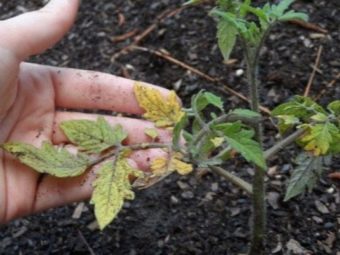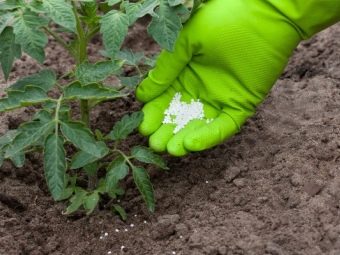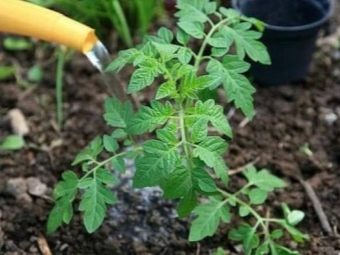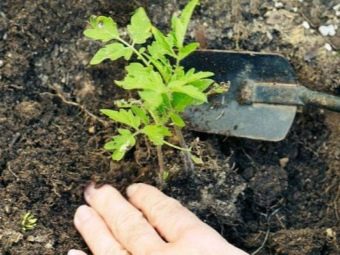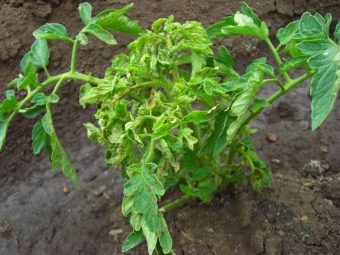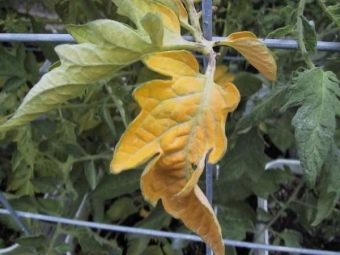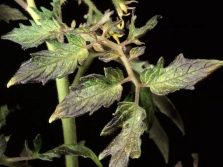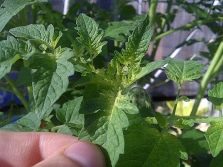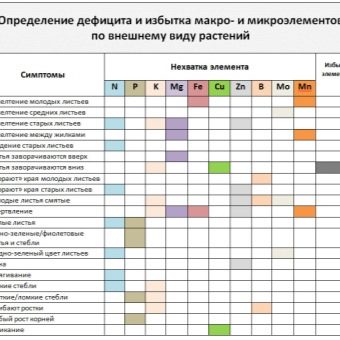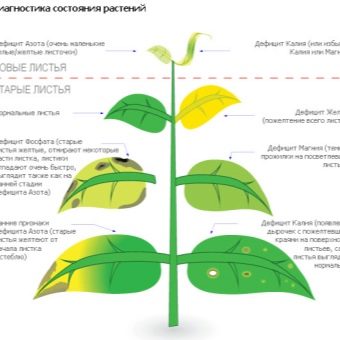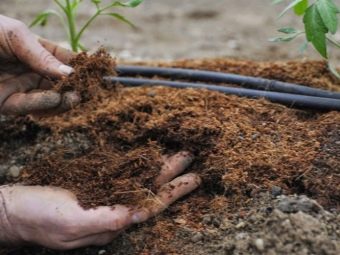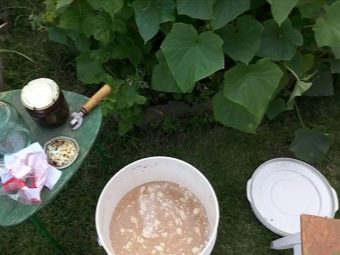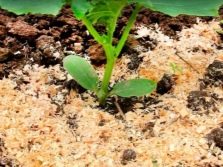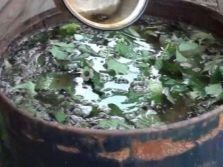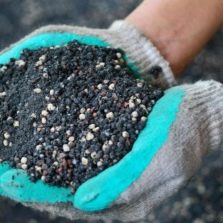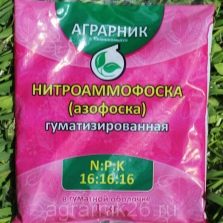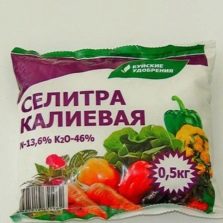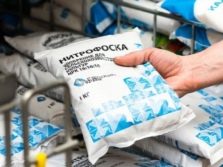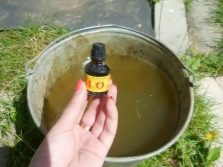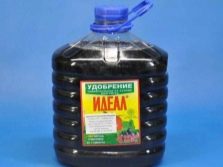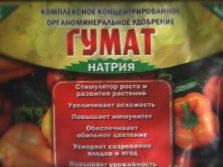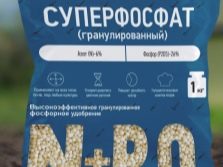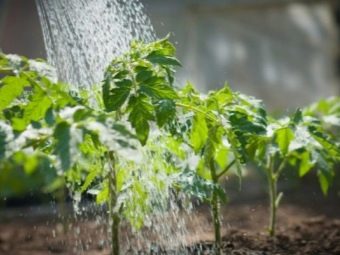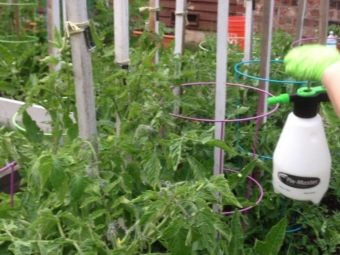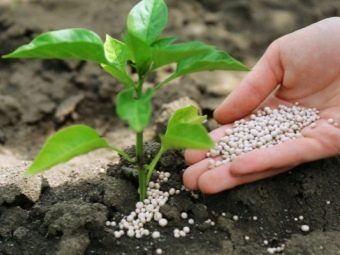How to feed tomatoes after planting in the ground?

Planting tomatoes in the ground, do not forget that one of the most important procedures for the care of these plants is fertilizing.It is necessary for all tomatoes, without exception, and is a complex process. It includes the steps of diagnosing the needs of the plant, the choice of the necessary substance for feeding and the direct implementation of this procedure. But not everyone knows how to properly perform each of the stages of the process. In this article, all the nuances of the procedure will be considered in detail, which will allow successful introduction of nutrients for tomatoes even to inexperienced summer residents.
Special features
The fertilization procedure is based on several important characteristics. First of all, they can be attributed to two varieties of dressing - root and foliar.
The first option involves the introduction of nutrients directly into the soil, closer to the root zone. It is with the help of the roots that the plant absorbs everything needed from the soil, so it is important not only to ensure the growth of the root system, but also its health.
To implement this type of fertilizing correctly, you should know in advance about which elements should be part of the soil for the favorable development of the plant. And also loosening of the soil and its mulching will come to the rescue. These procedures make the earth more uniform and allow the root system to more efficiently be saturated with nutrients.
The foliar type of application of the necessary fertilizers is also very popular among summer residents. It is necessary for tomatoes as well as the root, so the ideal option is to use two types of feeding together. The foliar procedure is not applied through the soil, but directly onto the plants by spraying. It has many positive characteristics.
- Reduced consumption of some fertilizers. This is due to the uniform distribution of substances in the leaves and stalks of plants.
- If in the process of fertilizing the root with water, tomatoes cannot assimilate the full dose of nutrients due to the fact that they are washed out with moisture, then when spraying, all fertilizer gets on the leaves and is absorbed by plants.
- The undoubted advantage is that the external feeding provides quick help to tomatoes. Entering into immediate contact with the plants, the necessary components are able to rehabilitate it more quickly than fertilizing through the root.
- However, remember that in the implementation of spraying tomatoes need to take into account several important nuances.
- Observe the concentration of the substances according to the instructions on the package. If the liquid is too concentrated, then, hitting the leaves, it can leave burns on them.
Do not use for spraying water that contains bleach.
Another feature is the schedule of making the necessary substances in the soil or plants. In this matter, it is better to avoid extremes. Excessively frequent nutrient supply is fraught with severe burns from excess minerals. With rare fertilization processes, tomatoes may die due to a lack of nutrients.
An important component of top dressing is to determine which substances the plant needs by its appearance. The lack of specific elements can be judged by some criteria.
- If the growth of tomatoes slows down, the appearance of young leaves is too faded, the yellowing of the leaves below, thinning of the roots or ovary of a small size, then the plant needs nitrogen. He is responsible not only for the process of photosynthesis, but also for the amount of greenery in the aerial part of the plant. If you do not make fertilizer, then the leaves will curl and then die.
- Such signs as a stunted growth, the appearance of a yellow border on the sheets, their dying off in especially neglected cases testify to the lack of potassium.
- If tomatoes need phosphorus, then a blue tone appears in the leaf color, an even darker violet hue becomes noticeable on the stems, the leaves start to curl, the growth process itself usually stops and the vegetables look rather sluggish. At the roots with a deficiency of the element may be a raid rust. But in the case of an excessive amount of phosphorus leaves quickly turn yellow and fall away.
- Signs of zinc deficiency are shown by signs such as an abundance of yellow spots on the lower leaves. At the same time, new leaflets do not grow to large sizes and also have yellow specks.
- An insufficient amount of magnesium provokes the appearance of yellowness in the central part of the sheets. And also the leaves themselves unfold upside down, and the process of their death gradually begins.
All these stages appear first in the lower part of the plant, and then move to the upper areas.
- A lack of calcium appears, on the contrary, from the top of the bush. At the tops may appear rot, as well as the green itself has a rather dark color. Old leaves with this significantly increase in size, and new ones appear with yellowness.
- If the plant stems become thin, and red-blue and yellow streaks begin to appear on the leaves, then the tomatoes lack sulfur.
- Sometimes brown spots or dark streaks appear on fruits and leaves. And at the same time the top of the plant begins to slope downwards, the formation of the ovary deteriorates. In this case it is necessary to fill the lack of boric acid.
- When the plant needs iron, this is indicated by the yellow-white leaflets at the top, as well as the yellowing of the greenery starting from the lower portions. At the same time the growth of tomatoes is much slower.
It is also worth remembering that different types of fertilizers are used for tomatoes, and there is a special algorithm for their application, consisting of several successive stages.
Fertilizer types
Fertilizers, especially important for tomatoes, can be of different origin. According to the presence of chemical compounds in the composition they are divided into three types.
Organic
This type of fertilizer is a substance of natural origin containing nutrients. They are responsible for the favorable composition of the soil and are especially important when the tomatoes are only transplanted into the open ground. The ideal set of components includes manure, compost, humus, peat, chicken manure. Each of them has a certain beneficial effect.
- Manure not only improves soil fertility, but also nourishes it with nitrogen. To use as a top dressing, it is usually insisted. 2500 grams of cow manure are taken for one bucket of water.
- Humus - substance of plant origin. It enriches the soil for tomatoes with useful substances in the spring season.
- Abundantly saturates the soil with nitrogen compounds also bird droppings. As a rule, to feed tomatoes, it is diluted in water and added to the soil. 0.2 kg of fertilizer is used per square meter.
- Peat contains fewer nutrients, so it is not used as a separate feeding, but it is very useful in carrying out the processes of mulching.
- Sawdust poured with ureaIt is often used in cases where the gardener deals with heavy ground. This component enriches the soil with nitrogen, but in most cases it is laid in the soil in the winter season.
- To stimulate growth and strengthen the state and increase the size of the root system, you can use such organic matter like yeast. They also contribute to faster formation of new shoots. About 600 grams of yeast is usually diluted in 6 liters of water. After infusion for 24 hours, the composition is stirred and another 6 liters of liquid is poured. The watering itself is carried out in such a way that about one liter of fertilizer is used per bush.
- One of the proven folk remedies that help saturate tomatoes with nutritional components is infusion of herbs. To create it useful nettle and dandelion greens. They are filled with water, for 10 days infused with periodic stirring of the composition. To feed, a liter of infusion is poured into a bucket and diluted with water.
Mineral fertilizers
Another type of fertilizer for tomatoes are mineral compounds. They are substances that contain a set of all the necessary elements for the nutrition of tomatoes. The most common are several fertilizers.
- Nitroammofosk, which includes compounds of potassium, nitrogen and phosphorus. It is often used during summer dressings, as well as in the process of digging plants.
- Ammophos contains two components - phosphorus and nitrogen. It is often used for plants in greenhouse conditions.
- Potassium nitrate combines potassium with nitrogen. It is introduced into the soil during the preparation of future tomato beds.
- The complex composition of all three components is present in nitrophoska. Fertilizer is used mostly during the digging process.
- The latest type of nutrient fertilizer is considered complex substances in which organic material is combined with substances of inorganic origin. The most popular supplements are “Malyshok”, containing in its composition, in addition to phosphorus and nitrogen, substances such as sand, peat and dolomite flour. Also popular is Bio Vita, which, in addition to mineral components, uses bacteria and humic acids in its fertilizers.
But you can also independently prepare a mixture of organic and inorganic substances. To do this, 25 grams of dry litter should be dissolved in 0.5 liters of water. After the amount of one teaspoon to the mixture is added potassium sulfate and superphosphate. After mixing, the resulting composition is diluted with 10 liters of water and used.
Feed schemes
In order to properly feed the tomatoes after planting the seedlings in open ground, you need to take into account that feeding is carried out in 4 stages, each of which has a specific time. Consider how the seedling fertilizer scheme looks.
- At the first stage immediately after transplanting tomatoes into the ground emphasis should be placed on strengthening the immunity of seedlings, as well as stimulating their growth and speeding up the adaptation processes. A week after planting, it is recommended to sprinkle young plants with a solution of 9 liters of water, a liter of serum and 10 drops of iodine.
- To feed the roots during the first period You can use the fertilizer "Ideal" (in the amount of 1 tablespoon), the same amount of nitrophoska, while dissolving the components in 10 liters of water. In addition, each plant should be fertilized with no more than 0.5 liters of the substance.
- The second time the tomatoes need to be fed when they start to bloom, also during this period, the second brush should bloom. The introduction of nutrients is needed for the subsequent formation of healthy and strong ovaries. Feeding is carried out by making a solution, which consists of one tablespoon of superphosphate and the substance Agricola-Vegeta, 10 liters of water, and potassium chloride or potassium sulfate, taken in an amount of one teaspoon. For each bush will need one liter of fertilizer.
- The third stage occurs as soon as the third flower brush is in full bloom. Creates a special dressing by mixing 1 tbsp. spoon fertilizer "Ideal" or "Sodium Humate" in a liquid consistency, the same amount of nitrophoska and 10 liters of water. For a 1m2 patch, the amount of fertilizer will be about 5 liters.
- The last stage is carried out 21 days after the third procedure. Plants need to be watered with a solution created by diluting a tablespoon of superphosphate in 10 liters of water. At the same time expect that all 10 liters will go to 1 m2 of area.
If the condition of the tomatoes deteriorates, carry out an additional fifth feeding.
In order to properly implement all the steps of making nutrients for tomatoes, it is important to follow a number of rules when performing this process:
- fertilize tomatoes immediately after watering;
- when plants do not have enough iron or calcium, the elements must be introduced using special preparations, adhering to the interval of 2 weeks;
- consider the growing season when determining the amount of feeding bushes;
- iron deficiency is usually compensated by special means in 2 stages with an interval of a couple of weeks;
- To prevent the accumulation of nitrates in the earth, it is not necessary to mix organics and minerals;
- To rid the tomatoes of the accumulation of minerals in them two weeks before harvesting, fertilization stops;
- if you grow tomatoes not in the greenhouse, but in the open air, then feeding will differ only in that for the second variant it will need to be carried out more often, since in rainy weather the nutrients are washed out faster from the soil.
Tips
To perfect the care of tomatoes is not enough just to follow the rules. It is important to consider the recommendations of experienced gardeners when growing these plants.
- In the implementation of foliar top dressing is best to use rain moisture.
- It is important to remember about the prevention of various diseases that often appear in garden plants. Useful compounds for this purpose are copper sulphate, Bordeaux liquid, calcium nitrate or complex ready-made compositions.
- It is better not to leave voids between plants when they are planted in open ground. So tomatoes become more vulnerable. Therefore, you can fill this space with other cultures, such as onions or lettuce.
- If you are unsure of the required amount of fertilizer, it is better to add less substance than to over-plant.
- Pay attention to the composition of the finished fertilizer. Those that contain metal oxides can not be combined with other means.
- Thus, the guarantee of a rich harvest of tasty tomatoes is an early awareness of their needs, timely replenishment of nutrients and control over the general condition of the plants.
If you follow these nuances, the plants will bring you the perfect fruit.
How the first top dressing of tomatoes is carried out after disembarkation, look in the following video.

